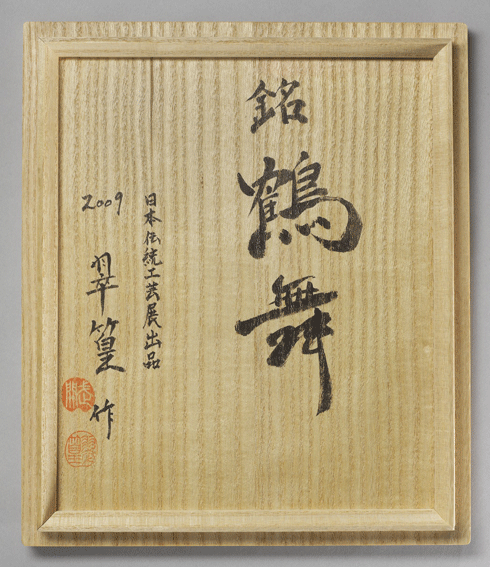Key in a search term below to search our website.
Key in a search term below to search our website.
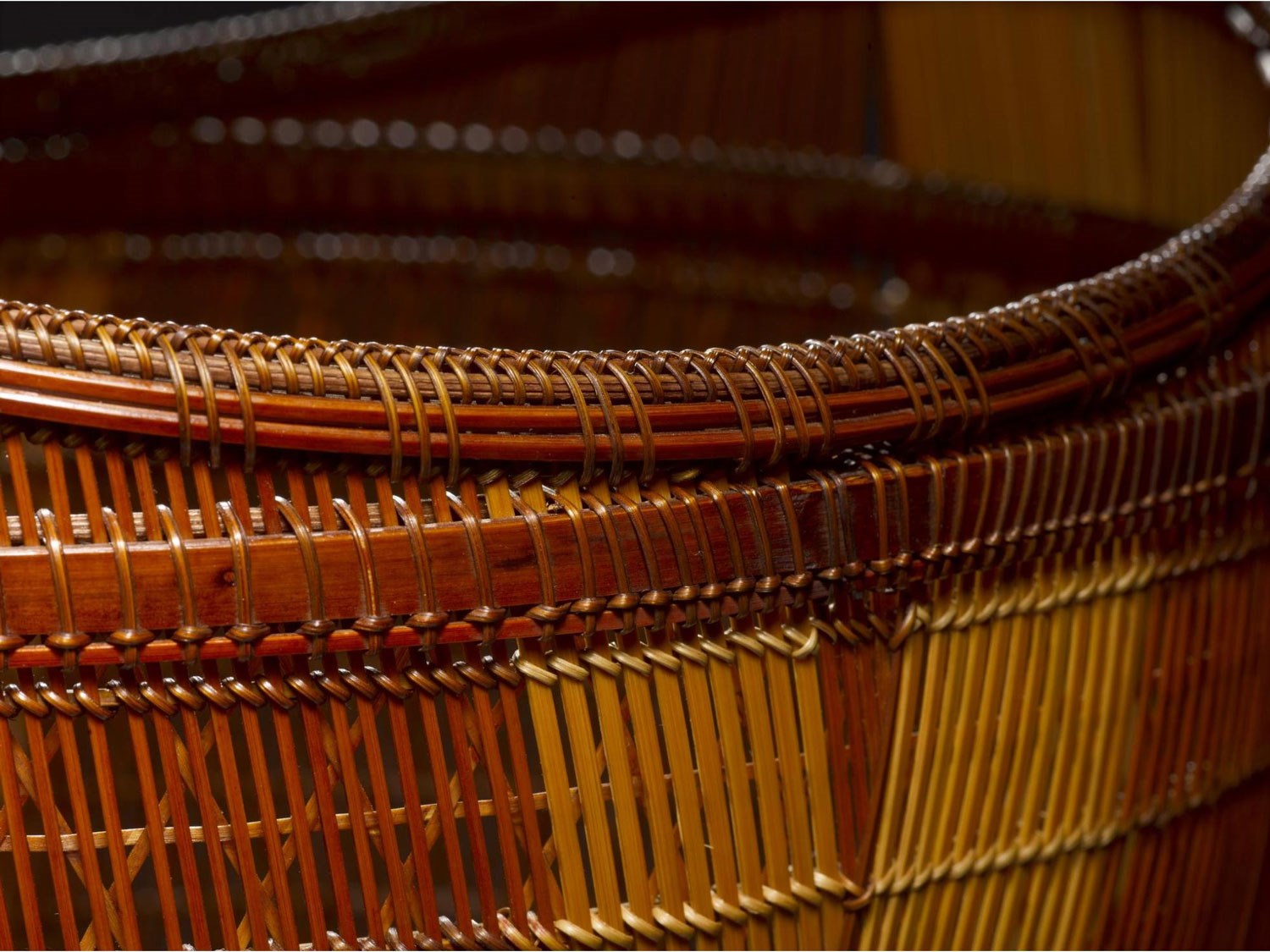
This woven bamboo flower basket titled ‘Crane Dance’ was created by Japanese artist Buseki Suikō in 2009.
Date
2009
Made in
Tokyo, Japan
Made by
Buseki Suikō
Made from
Bamboo
Acquired
In 2012 by Artfund Collect
Museum reference
On display
Exploring East Asia, Level 5, National Museum of Scotland
Did you know?
Crane Dance is the first bamboo craft object acquired by National Museums Scotland.
Buseki Suikō is the last traditional bamboo artist in Tokyo. This basket is the first piece by Buseki Suikō purchased for public display outside of Japan. It was acquired for the Museum in 2012 by Art Fund Collect.
Since the 19th century, bamboo, a plentiful resource, has been central to the craft of Japan. Japanese woven flower baskets have traditionally been associated with practices of flower arranging and the tea ceremony.
The kagoshi, master basket weavers, strove to modernise their practice, and move away from associations with tea ceremonies. Over time this has progressed, so that in Japan bamboo weaving is now considered an independent form of art.
This is the first bamboo craft object acquired by the National Museum of Scotland.
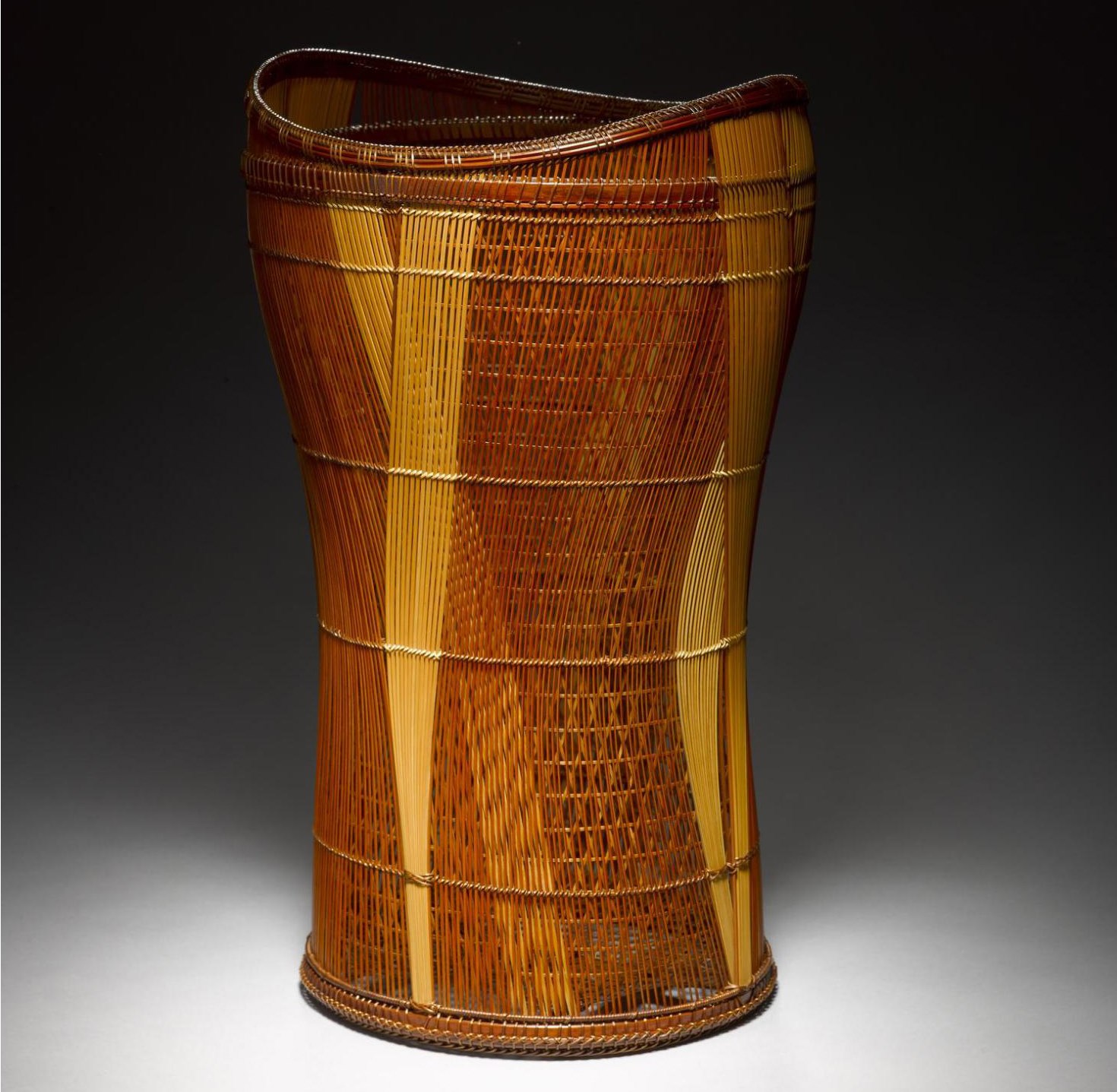
Buseki Suikō has developed a new method of weaving which allows the interplay of light through the inner and outer layers of the basket. His technical skill produces a delicate, lighter form compared with traditionally heavy basketry.
This method also enhances the decorative patterning and creates a sense of fluid movement around the basket.
Suikō has compared his weaving method to that of an architect. He must carefully plan the placement of each thin strip of aged bamboo. Suikō does this to ensure that the work is structurally sound, and also that it has the desired visual combination of patterns and colours.
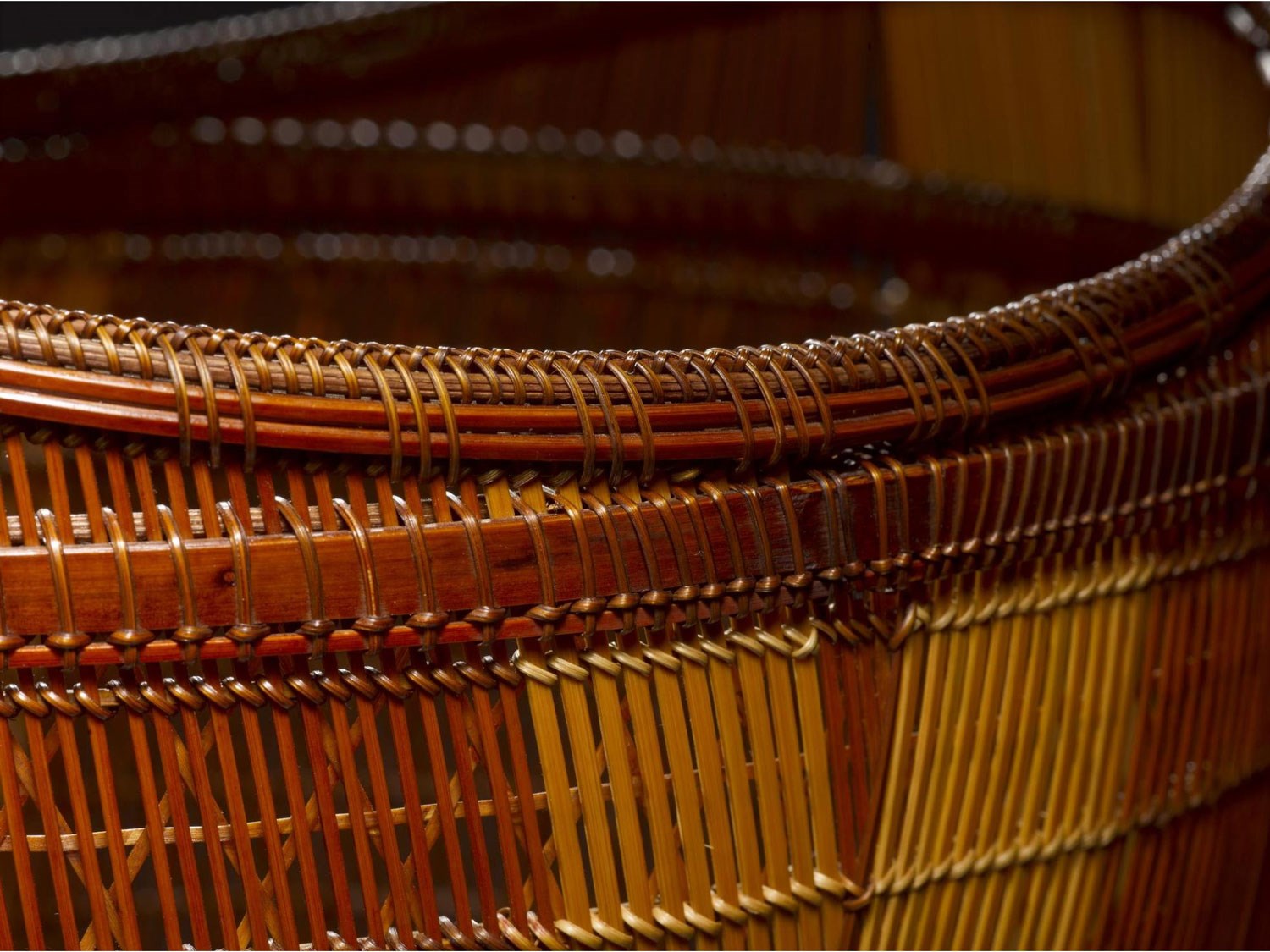
Suikō was inspired by nature, as he created this basket after seeing cranes dancing in Kushiro, on the northern island of Hokkaido. The intersecting pattern represents the necks of the cranes.
Underneath the basket, the knot which finishes off the piece is formed in the shape of a turtle.
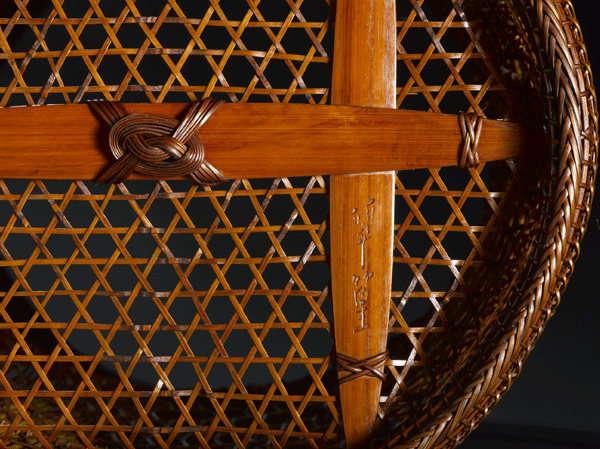
Above: Detail of the base of Crane Dance, showing the signature of Buseki Suikō.
The turtle and crane are important motifs in the East Asian visual traditions, symbolising long life; and can also be seen on this 'inro' or medicine case.
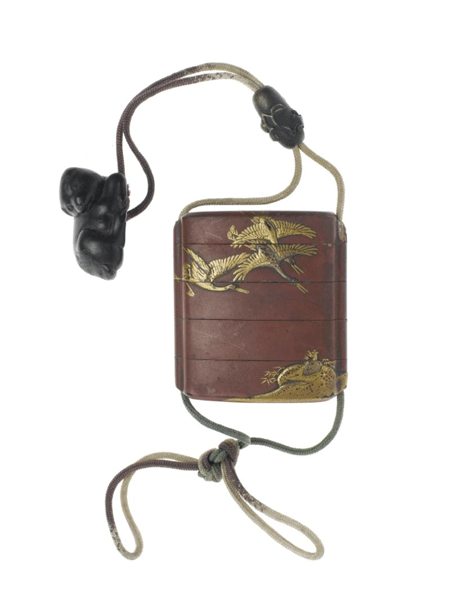
Buseki Suikō’s ‘Crane Dance’ is a superb example of how contemporary Japanese artists have developed the technical skills and elegance of bamboo craft traditions.
